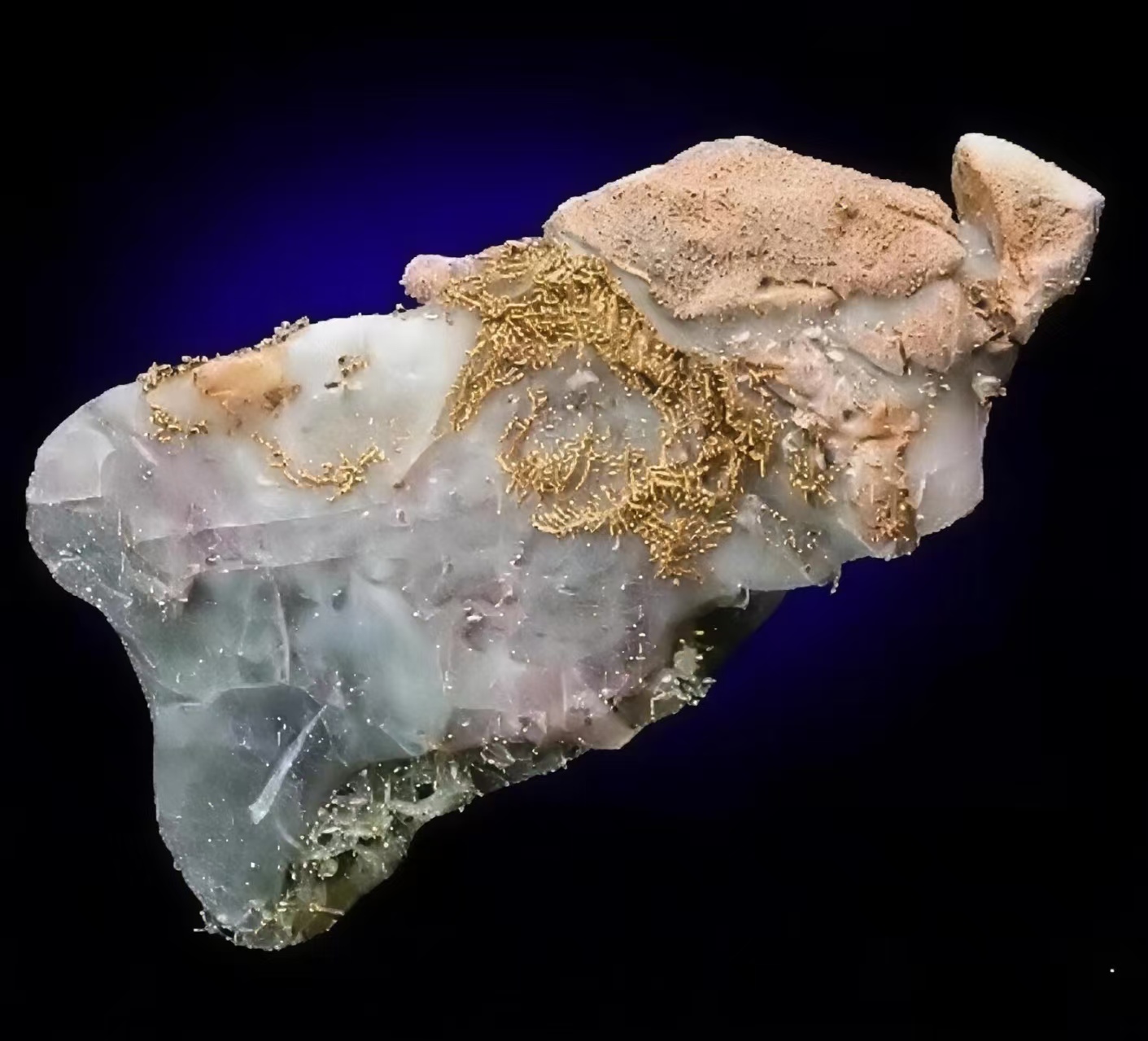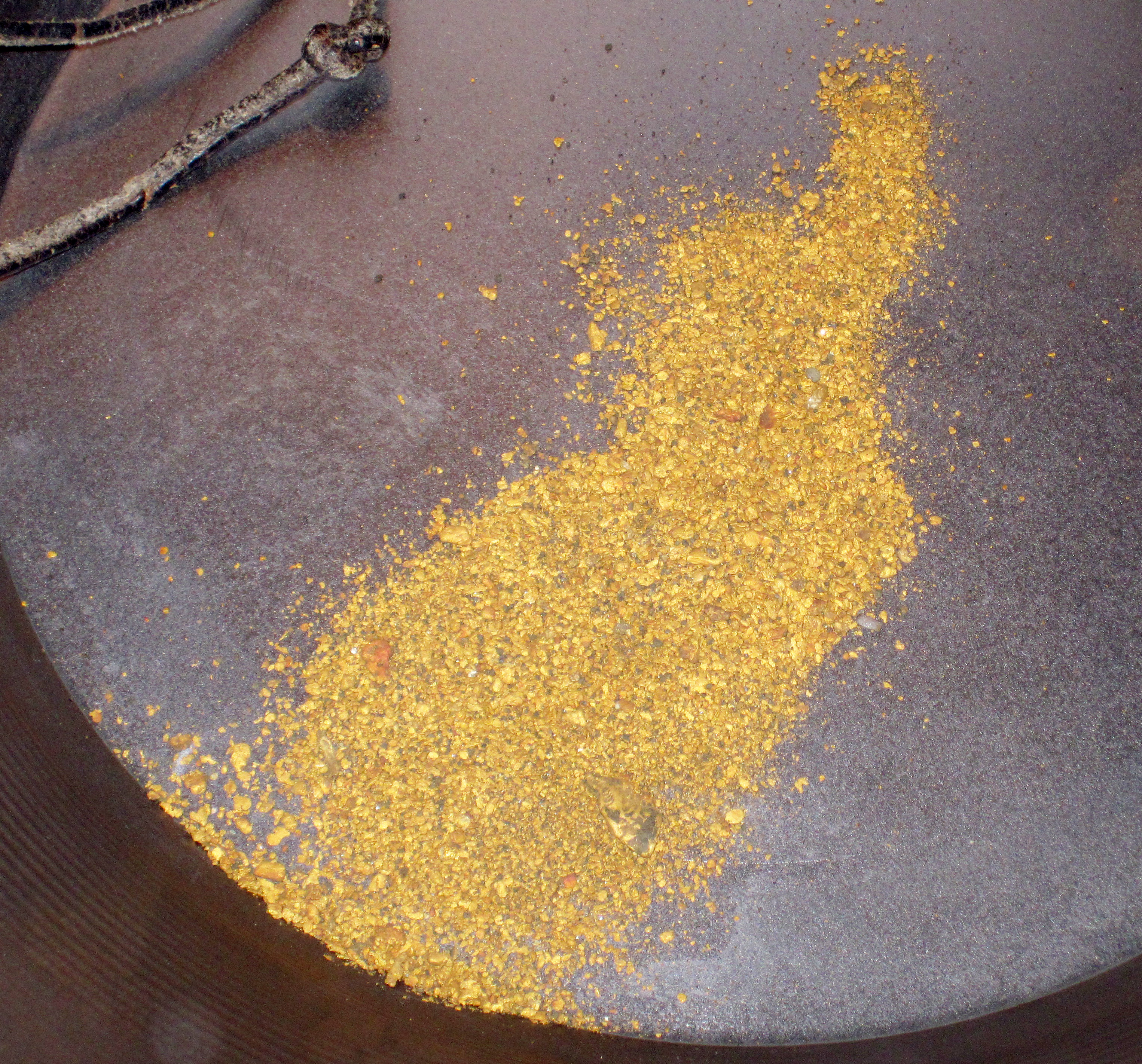Understanding the Three Natural Forms of Gold: Lode, Placer, and Nugget
Quote from chief_editor on July 17, 2025, 7:01 amGold has long been prized for its rarity, stability, and enduring value. Based on its mode of occurrence and formation, gold in nature can be broadly classified into three types: lode gold (primary gold), placer gold (secondary gold), and nugget gold (natural gold lumps). This article provides a detailed overview of their definitions, formation processes, and distinguishing characteristics.
1. Lode Gold (Primary Gold)
Definition
Lode gold refers to gold that is hosted within bedrock, typically in quartz veins or sulfide-rich mineral deposits. It generally occurs as extremely fine particles (0.001–0.1 mm), invisible to the naked eye, and must be extracted through mineral processing and metallurgical techniques.Formation Process
• Magmatic-hydrothermal origin: Gold is transported by hydrothermal fluids generated from magmatic activity. As these fluids migrate through rock fractures or fault zones, gold precipitates and forms auriferous quartz veins (e.g., Linglong-type gold deposits in China).
• Metamorphic-hydrothermal origin: During regional metamorphism, gold is mobilized from source rocks and re-deposited in structurally favorable zones (e.g., orogenic gold systems).Characteristics
• Requires crushing, grinding, and processes such as cyanidation or flotation to recover gold.
• Generally low-grade (1–10 grams per tonne), but represents the majority of global gold reserves.
• Typical deposits: Witwatersrand Basin (South Africa), Jiaodong Gold Belt (China).
2. Placer Gold (Secondary Gold)
Definition
Placer gold refers to gold that has been eroded from primary deposits and transported by water, eventually settling in riverbeds, ancient stream channels, or coastal sediments. It typically occurs as visible grains or flakes.Formation Process
• Weathering: Gold-bearing bedrock is exposed to the surface and disintegrated by physical and chemical weathering.
• Transportation: Gold particles, due to their high density (19.3 g/cm³), are less likely to be carried far by water and gradually settle in low-energy environments.
• Deposition: Gold accumulates in river bends, bedrock crevices, or paleo-channels, forming economic placer deposits.Characteristics
• Recoverable through simple methods such as panning, sluicing, or other gravity separation techniques.
• Particles are typically coarse (0.1–5 mm), often visible as flakes or small nuggets.
• Grade varies significantly; rich placers may yield 1–10 grams per cubic meter.
• Typical locations: Alaska (USA), Lena River (Russia), Heilongjiang Province (China).
3. Nugget Gold (Natural Gold Lumps)
Definition
Nugget gold refers to naturally occurring, unrefined gold lumps—usually weighing over 1 gram. These irregularly shaped pieces often exhibit porous or dendritic surfaces and are considered rare.Formation Process
• Chemical precipitation: Gold precipitates slowly from mineral-rich groundwater under reducing conditions.
• Biogenic processes: Certain microorganisms (e.g., metal-tolerant bacteria) can adsorb gold ions, aiding gold accumulation.
• Mechanical aggregation: Gold particles in placer environments may gradually form larger lumps through repeated collision, compaction, and cementation.Characteristics
• Extremely rare; most nuggets range from several grams to several kilograms.
• High purity (typically 70%–90%), with trace amounts of silver, copper, or other metals.
• Often found in placer deposits or shallow oxidized zones.
• Notable locations: Australia, California (USA), Baiyu County (Sichuan, China).
• The largest recorded nugget is the 250 kg “Holtermann Nugget” found in Australia.
4. Comparative Summary
To summarize, here are the main distinctions between lode, placer, and nugget gold:
Occurrence
• Lode Gold: Embedded within quartz veins or sulfide-rich rocks.
• Placer Gold: Found in sediments such as riverbeds or ancient stream channels.
• Nugget Gold: Occurs as individual gold lumps near the surface or within shallow layers.Particle Size
• Lode Gold: Microscopic particles, usually invisible to the naked eye.
• Placer Gold: Coarser particles and flakes, typically visible.
• Nugget Gold: Larger standalone chunks (>1 gram), often irregular in shape.Recovery Method
• Lode Gold: Requires underground mining, crushing, grinding, and chemical processing.
• Placer Gold: Extracted through physical separation methods like panning or sluicing.
• Nugget Gold: Usually recovered manually or found by chance during placer mining.Typical Locations
• Lode Gold: South Africa, China’s Jiaodong Peninsula.
• Placer Gold: Alaska, Russia, Northeast China.
• Nugget Gold: Australia, USA (California), China (Sichuan).
5. Conclusion
• Lode gold represents the primary geological source of gold and requires industrial-scale extraction.
• Placer gold forms through natural weathering and transport of lode deposits, concentrating gold in sedimentary environments.
• Nugget gold is the rarest form—naturally occurring, high-purity gold lumps valued for both scientific and collectible significance.A clear understanding of these types of gold supports informed decision-making in exploration, mineral processing, and resource evaluation.
Figure Notes:
Figure 1: Native gold etched out of calcite. Devon, England. Source: Mining Industry.
Figure 2: Placer gold (gold dust). Photo by James St. John. Licensed under CC BY 2.0. Source: Wikimedia Commons.
Figure 3: Nugget gold. Altay, Xinjiang, China. Photo by simayuan. Source: Mining Industry.
Gold has long been prized for its rarity, stability, and enduring value. Based on its mode of occurrence and formation, gold in nature can be broadly classified into three types: lode gold (primary gold), placer gold (secondary gold), and nugget gold (natural gold lumps). This article provides a detailed overview of their definitions, formation processes, and distinguishing characteristics.
1. Lode Gold (Primary Gold)
Definition
Lode gold refers to gold that is hosted within bedrock, typically in quartz veins or sulfide-rich mineral deposits. It generally occurs as extremely fine particles (0.001–0.1 mm), invisible to the naked eye, and must be extracted through mineral processing and metallurgical techniques.
Formation Process
• Magmatic-hydrothermal origin: Gold is transported by hydrothermal fluids generated from magmatic activity. As these fluids migrate through rock fractures or fault zones, gold precipitates and forms auriferous quartz veins (e.g., Linglong-type gold deposits in China).
• Metamorphic-hydrothermal origin: During regional metamorphism, gold is mobilized from source rocks and re-deposited in structurally favorable zones (e.g., orogenic gold systems).
Characteristics
• Requires crushing, grinding, and processes such as cyanidation or flotation to recover gold.
• Generally low-grade (1–10 grams per tonne), but represents the majority of global gold reserves.
• Typical deposits: Witwatersrand Basin (South Africa), Jiaodong Gold Belt (China).
2. Placer Gold (Secondary Gold)
Definition
Placer gold refers to gold that has been eroded from primary deposits and transported by water, eventually settling in riverbeds, ancient stream channels, or coastal sediments. It typically occurs as visible grains or flakes.
Formation Process
• Weathering: Gold-bearing bedrock is exposed to the surface and disintegrated by physical and chemical weathering.
• Transportation: Gold particles, due to their high density (19.3 g/cm³), are less likely to be carried far by water and gradually settle in low-energy environments.
• Deposition: Gold accumulates in river bends, bedrock crevices, or paleo-channels, forming economic placer deposits.
Characteristics
• Recoverable through simple methods such as panning, sluicing, or other gravity separation techniques.
• Particles are typically coarse (0.1–5 mm), often visible as flakes or small nuggets.
• Grade varies significantly; rich placers may yield 1–10 grams per cubic meter.
• Typical locations: Alaska (USA), Lena River (Russia), Heilongjiang Province (China).
3. Nugget Gold (Natural Gold Lumps)
Definition
Nugget gold refers to naturally occurring, unrefined gold lumps—usually weighing over 1 gram. These irregularly shaped pieces often exhibit porous or dendritic surfaces and are considered rare.
Formation Process
• Chemical precipitation: Gold precipitates slowly from mineral-rich groundwater under reducing conditions.
• Biogenic processes: Certain microorganisms (e.g., metal-tolerant bacteria) can adsorb gold ions, aiding gold accumulation.
• Mechanical aggregation: Gold particles in placer environments may gradually form larger lumps through repeated collision, compaction, and cementation.
Characteristics
• Extremely rare; most nuggets range from several grams to several kilograms.
• High purity (typically 70%–90%), with trace amounts of silver, copper, or other metals.
• Often found in placer deposits or shallow oxidized zones.
• Notable locations: Australia, California (USA), Baiyu County (Sichuan, China).
• The largest recorded nugget is the 250 kg “Holtermann Nugget” found in Australia.
4. Comparative Summary
To summarize, here are the main distinctions between lode, placer, and nugget gold:
Occurrence
• Lode Gold: Embedded within quartz veins or sulfide-rich rocks.
• Placer Gold: Found in sediments such as riverbeds or ancient stream channels.
• Nugget Gold: Occurs as individual gold lumps near the surface or within shallow layers.
Particle Size
• Lode Gold: Microscopic particles, usually invisible to the naked eye.
• Placer Gold: Coarser particles and flakes, typically visible.
• Nugget Gold: Larger standalone chunks (>1 gram), often irregular in shape.
Recovery Method
• Lode Gold: Requires underground mining, crushing, grinding, and chemical processing.
• Placer Gold: Extracted through physical separation methods like panning or sluicing.
• Nugget Gold: Usually recovered manually or found by chance during placer mining.
Typical Locations
• Lode Gold: South Africa, China’s Jiaodong Peninsula.
• Placer Gold: Alaska, Russia, Northeast China.
• Nugget Gold: Australia, USA (California), China (Sichuan).
5. Conclusion
• Lode gold represents the primary geological source of gold and requires industrial-scale extraction.
• Placer gold forms through natural weathering and transport of lode deposits, concentrating gold in sedimentary environments.
• Nugget gold is the rarest form—naturally occurring, high-purity gold lumps valued for both scientific and collectible significance.
A clear understanding of these types of gold supports informed decision-making in exploration, mineral processing, and resource evaluation.
Figure Notes:
Figure 1: Native gold etched out of calcite. Devon, England. Source: Mining Industry.
Figure 2: Placer gold (gold dust). Photo by James St. John. Licensed under CC BY 2.0. Source: Wikimedia Commons.
Figure 3: Nugget gold. Altay, Xinjiang, China. Photo by simayuan. Source: Mining Industry.



